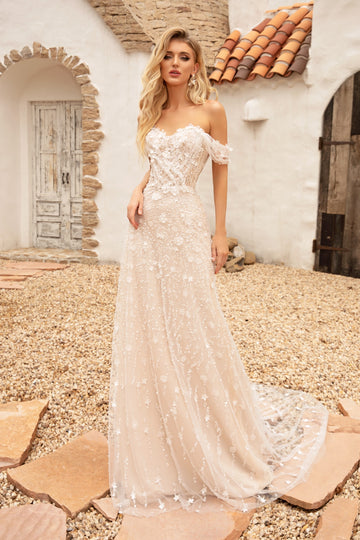Understanding Consumer Behavior in Bridal Fashion: Trends, Insights, and Strategies
Understanding Consumer Behavior in Bridal Fashion: Trends, Insights, and Strategies
Introduction
Bridal fashion is an ever-evolving industry, deeply intertwined with cultural trends, personal preferences, and consumer behavior. As engaged couples make decisions on everything from the dress to accessories, understanding the nuances of consumer behavior in bridal fashion has never been more critical. This article will explore various factors influencing purchasing decisions, highlight emerging trends, and offer insights for retailers seeking to capitalize on consumer preferences.
Factors Influencing Consumer Behavior in Bridal Fashion
Several key factors drive consumer behavior when it comes to bridal fashion. These include emotional considerations, social influences, and economic factors. Below, we break down these influences:
| Factors | Description |
| Emotional Considerations | Bridal fashion purchases are often driven by emotional experiences, as brides envision their special day. |
| Social Influences | Family, friends, and social media play significant roles in shaping a bride's fashion choices. |
| Economic Factors | The budget constraints and financial planning involved in weddings significantly affect purchasing decisions. |
The Role of Social Media and Influencers
In today's digital age, social media has revolutionized consumer behavior in every industry, and bridal fashion is no exception. Platforms like Instagram, Pinterest, and TikTok have become pivotal spaces where brides gather inspiration. The presence of influencers and fashion icons can elevate brands and create trends overnight. 
How Social Media Shapes Preferences
Brides often turn to social media to explore current trends and gather ideas for their wedding day. They seek real-life examples that resonate with their tastes. Influencers showcasing bridal looks or unboxing experiences sway potential buyers significantly. Moreover, user-generated content (UGC), such as photos of brides in their dresses, adds credibility and connections to other consumers.
Emerging Trends in Bridal Fashion
The bridal fashion landscape is dotted with numerous emerging trends that cater to changing consumer preferences. Here are some prominent trends influencing purchasing behavior:
- Sustainable Fashion: More brides are seeking eco-friendly options, leading to the rise of sustainable bridal fashion.
- Minimalism: A shift towards simple and elegant designs reflects contemporary lifestyle values.
- Cultural Representation: Brides are increasingly looking to incorporate cultural elements into their attire, promoting diversity.
- Customization: Many brides desire unique garments tailored to their personal style.
The Economic Landscape for Bridal Fashion
The wedding industry is a multi-billion dollar market, with the average amount spent on weddings significantly varying by region. For instance, in the United States, couples spend an average of $28,000 on their wedding. This figure can fluctuate dramatically based on factors such as location, guest count, and individual preferences. Understanding these financial considerations is vital for both consumers and businesses.
Budgeting for Bridal Fashion
Brides typically allocate a considerable portion of their wedding budget to bridal fashion. Based on the average spending patterns, the following is a snapshot of budget allocation in bridal fashion:
| Item | Average Spending (USD) |
| Wedding Dress | $1,500 |
| Accessories | $300 |
| Alterations | $200 |
| Bridal Shoes | $150 |
| Veil and Headpieces | $200 |
Understanding Age Demographics
Consumer behavior in bridal fashion varies significantly across age demographics. Younger brides, often belonging to the millennial or Gen Z cohorts, tend to be more experimental in their fashion choices. In contrast, older brides might lean towards classic and timeless styles. Brands must carefully consider age demographics when marketing their products.
Psychographics: The Emotional Side of Wedding Planning
Bridal purchases are not merely transactional; they encompass emotional experiences. Understanding the psychographics of brides, including their self-image, values, and aspirations, is crucial. Many brides hope to embody a fairy-tale image, making their bridal gown an essential part of that dream. Brands that connect emotionally with consumers often enjoy greater loyalty and brand advocacy.
Tips for Bridal Fashion Retailers
To thrive in the competitive landscape of bridal fashion, retailers must adopt strategies tailored to consumer behavior. Here are some essential tips:
- Enhance Online Presence: Develop an engaging online platform that highlights current trends, showcases customer testimonials, and offers interactive features.
- Leverage Influencer Partnerships: Collaborate with influencers for authentic promotions and real-life testimonials.
- Offer Customization: Provide customizable options for bridal gowns to meet unique buyer preferences.
- Educate Consumers: Utilize blogs, videos, and social media to educate brides about their options and the latest trends.
Conclusion
Understanding consumer behavior in bridal fashion is critical for success in this vibrant sector. As trends continue to evolve, retailers must remain attuned to emotional, social, and economic influences to cater effectively to their audience. Engaging with potential buyers through social media, tailoring unique designs, and being mindful of age demographics will set retailers apart. Additionally, brides should feel empowered by the options available to them, ensuring that their wedding day reflects their personal style and values. As a final note, remember to embrace sustainability and inclusivity in design choices to resonate with contemporary consumer aspirations.
